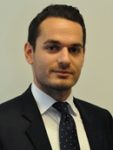10 Years of Boredom
Stockholm (HedgeNordic) – Managers set out to develop market neutral strategies when starting their funds often look back at their track records in disbelief and failure after a period of trading. Somehow, somewhere, market neutrality slipped and dipped its toes into buckets of correlations. Atlant Stability, the flagship hedge fund of Swedish asset manager Atlant Fonder, probably gets as close as you can to a true market neutral fund and is celebrating its tenth anniversary this month.
Reason enough for us at HedgeNordic to have a chat with two of the portfolio managers, Taner Pikdöken and Nikos Georgelis, and discuss Atlant Stability’s strategy and get more insight into their expectations for the fund going forward.
Three Goals, Two Pillars

Atlant Stability is a hedge fund aiming to produce stable returns with low correlations to the Swedish stock market and fixed-income market. The fund’s objective is threefold: (1) generate annual returns of more than three percent above the risk-free rate, (2) generate positive returns in at least 80 of all calendar months, and (3) avoid monthly losses of more than one percent. To achieve the objective, Stability invests the main bulk of its capital in fixed-income instruments, mainly corporate bonds tilting toward higher quality investment-grade bonds. “Our mandate allows for a portfolio exposure of no less than 50 percent to investment-grade bonds, and we have 60 to 70 percent of our fixed-income portfolio invested in high-grade bonds on any given day,” says Taner Pikdöken, who is responsible for selecting fixed-income investments for Atlant Fonder’s suite of eight vehicles.

The fixed-income portfolio is just one of the two pillars in Atlant Stability’s investment strategy. The fund also employs derivatives strategies within equities and fixed income mainly to hedge the corporate bond portfolio, lower the volatility in the fund and, to a lesser extent, create additional returns. “Some fixed-income derivatives are used to hedge duration risk in our fixed-income portfolio and hedge movements in underlying interest rates,” explains Nikos Georgelis, who is responsible for derivatives strategies at the firm. “As interest rates are going up, we use fixed-income derivatives to give the portfolio negative duration,” further explains Pikdöken. This implies Atlant Stability’s portfolio of bonds combined with its fixed-income derivatives are set to increase in value as interest rates go up. “We then buy a lot of equity derivatives, mainly put options on equity market indices, to hedge against market crashes,” says Georgelis on the usage of equity derivatives. “While our mandate allows us to use derivatives on any index including the S&P, Nasdaq or the Euro Stoxx, we mainly use derivatives on the OMXS30 Index,” adds Georgelis.
Explaining how Atlant Stability generates returns depending on market conditions, Taner Pikdöken says: “our equity derivatives portfolio is our portfolio’s main contributor to performance in times of severe market distress, whereas our fixed-income portfolio generates the returns in stable and upward moving markets.” “Bonds lost a lot of money during the Greek debt crisis, but our equity derivatives earned a lot more as a result,” Georgelis provides an example of how the strategy employed by Atlant Stability functions. “Our fund returned 7.6 percent net of fees during the 12-month period following the Greek crisis,” says Pikdöken. “This is a lot for a fund that targets annual returns of three percent, and the fund occasionally achieves such performance because the hedging component comprised of derivatives is so explosive in times of market distress,” he adds.
10 Years of Mileage on the Clock and Never Had a Down Year
In the ten years of operations since launching in October 2008, Atlant Stability achieved their objectives of delivering annual returns of at least three percent and generating positive returns in at least 80 percent of all calendar months. The hedge fund produced an average annual return of 3.4 percent over this period through the end of September of this year, generating positive returns in 86.7 percent of the months.
Further, the fund is yet to record a negative year. “We aimed to be the most boring hedge fund in Sweden and delivered on all our promises by being boring,” says Pikdöken. The realized volatility of the fund’s monthly returns on an annualized basis equals a mere 1.9 percent, while the fund’s Sharpe ratio of 1.6 percent greatly exceeds the original target Sharpe ratio of one.
With just under three billion Swedish kroner in assets under management, Atlant Stability is the largest hedge in Atlant Fonder’s fund range. “The main characteristic that allowed Stability to become our flagship vehicle is the low-risk level offered by the fund,” says Pikdöken. Discussing expectations for Atlant Stability in terms of performance going forward, Pikdöken says “we need a market correction to achieve our annual target of three percent.” “Unless interest rates go up quickly, we anticipate a return of 1.5 percent, mainly because of our huge cash hoard and the put options in our derivatives portfolio,” he adds.
Picture © Ollyy—shutterstock